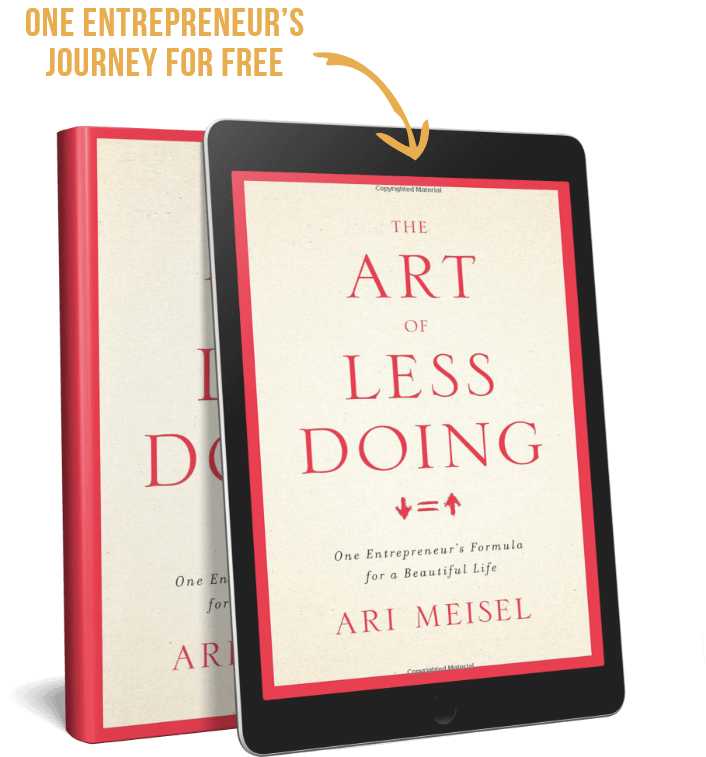Honestly, who among us doesn’t want to unlock our constraints, unleash our team, and create a business that’s unstoppable? I mean, that’s the goal, right? That’s the day you get to say, you’ve become a Replaceable Founder.
It’s serious work, moving toward replaceability and maybe, just maybe, it’s not the same kind of work you’ve been doing; the relentless, indefatigable march of self-reliance that got you where you are. (which is fantastic, BTW, you killed it!)
Still, it can be both a great and terrifying day when a founder realizes she’s no longer shepherding a start-up; when she must manage rather than create; when she must relinquish control to drive the business forward; when she must stop working in her business and begin to work on it.
So let’s break it down into nine critical accelerators every successful entrepreneur needs for sustainable, measurable growth.
CAVEAT: this isn’t apple picking with kids; grabbing the ones you like, throwing away the ones that look a little weird, ignoring the ones that seem too hard to grasp. Nope, you’ve got to put ALL the apples in your basket. What you make of them is up to you. (We’re attempting pie tonight. Wish me luck. I have four kids. Under 8.)
The 3Ds
Most entrepreneurs lack a system for making effective decisions. They believe this is an innate skill, but most allow the sheer volume of choices they have to make in a day overwhelm them or derail their productivity.
Hard truth: You are the bottleneck in your business if your decision-making isn’t fast, informed, or precise.
The Remedy: Limit everyone (you included) to 3 decisions. Really.
- Do: Complete a task now or assign it to someone else
- Delete: Decline a request
- Defer: Determine the best time to focus on the task
Response-Ability
Most businesses lack intentionality around communication. They either don’t know that they should or don’t know how to be intentional. As a result, their businesses are plagued with noise: people are constantly bombarded with information and requests that are neither timely nor relevant. What’s worse is that people’s most productive times are often interrupted by this noise.
Hard Truth: You need a framework (yesterday) for how, when, and why you communicate with both your team and clients to stop the noise and encourage action.
The Remedy: The Less Doing Communication Mindset
- Be intentional and purposeful about what, how, and when you communicate
- Use multiple tools, so people know where to go for what type of information
- Minimize interruptions at all costs
The 6 Levels of Delegation
Most entrepreneurs have experienced failures when it comes to delegation. They have asked people to take responsibility for a project and have not received the results they were expecting. It may be because they do not know how to delegate appropriately and lack experience in accurately communicating their intent.
If you’ve said on way too many occasions, “I got this.” You are not a master of delegation.
Hard Truth: You must accurately and effectively communicate your intent to others for them to operate successfully.
The Remedy: The 6 Levels of Delegation
- Level 1: Perform — Do as I say
- Level 2: Investigate — Look into this, and I’ll decide
- Level 3: Recommend — Give me your advice, and I’ll decide
- Level 4: Conclude — Explore, decide, but check with me
- Level 5: Decide — Explore and decide within these limits
- Level 6: Achieve — Take care of it for me
The External Brain
Entrepreneurs are full of ideas, but they lack a system and a plan for turning those ideas into reality. They either fall into the trap of letting a new idea hijack their time, or they completely forget about it and never apply it to grow their business.
Hard Truth: Your ideas are the fuel of your business. You must have a system to capture those ideas whenever and wherever you have them so you can act on them appropriately.
The Remedy: The External Brain Pathway
Capture Ideas — There’s a different time to have ideas than there is to process them. It would help if you had a way to keep them from distracting you.
Process Ideas — This is when you sit down to go through your ideas and determine what you’ll do with them.
Turn Ideas into Action Items — A method of getting your ideas from your capture point into your project management system.
Radical Transparency
The goal of a project management system isn’t just to have a place to dump an endless pile of to-do items. An effective project management system enables the leader to see precisely what is going on in the business so they can quickly, accurately, and effectively bring resources to bear to prevent bottlenecks.
If you look at your project management system and can’t tell what’s going on, can’t see where projects are in danger, or have to hunt down updates, then it is a hindrance.
Hard Truth: You need to have a bird’s eye view of what’s going on in your company at any given moment to identify bottlenecks and break log jams.
The Remedy: The 5 ITs of an Effective Project Management System
- It defines phases — some form of “to do,” “doing,” and “done.”
- It is dynamic — shows tasks moving through phases.
- It shows ownership — There is some way to indicate who is responsible.
- It sets deadlines — The owner knows when a deliverable is due.
- It allows work to happen — It tracks conversations and details.
Accountability
Many entrepreneurs fear accountability. So they don’t have a system to ensure projects get completed on time and to standard. Without a system, successful completion is left to chance or sweat or throwing more people at the problem. None of these tactics is a solution.
Hard Truth: You must be able to hold yourself and your team accountable for accomplishing the mission.
The Remedy: The Three Criteria for an Effective Accountability System
- Clear expectations — People know what is expected of them and by when
- Precise plan for tracking progress — Published accountability chart, Regular check-in schedule, and transparent lines of communication
- Predictable response when things go off track — This system is applied consistently but centers on improvement, not punishment.
Optimize for Clarity
Most businesses fail to consider how and why they do what they do regularly. They rarely take the time to dissect a process to get clarity on it, work to make it more efficient, and then document it so that that efficiency can be replicated.
As a result, most businesses are fraught with wasted time, money, and resources.
Hard Truth: You must regularly review every process in your business to minimize waste, inefficiency, and ineffectiveness.
The Remedy: The 9-Step Optimization Blueprint
To optimize a process, you must:
- Take an inventory
- Choose a place to begin
- Make a high-level map
- Make a video
- Give the video to someone else to create a checklist
- Give the checklist to someone else to run through
- Edit as necessary
- Document the process
- Regularly update the process
Automate for Precision
Most businesses fail to use technology to their advantage. They don’t consistently examine processes, implement appropriate automation, and ensure that every team member understands and embraces the technology.
Hard Truth: You must automate routine tasks to save time, save money, reduce mistakes, and allow you and your team to engage in higher-level pursuits.
The Remedy: The Automation Code
- Choose a process you have already optimized.
- List the tools you use in that process.
- Choose one.
- See if the appropriate trigger step is supported by Zapier.
- If it is, determine the action that follows that trigger.
- Choose the appropriate tool from Zapier.
- Follow the prompts to create your automation.
Outsource For Empowerment
Most founders fall into two traps when it comes to outsourcing. First is the “I have to do everything myself” excuse and second is the “We have to do that in-house” justification. It’s a stubbornness that invariably leads to overworked and overtasked teams who squander their talents on task better suited to someone or something else.
Hard Truth: You should outsource or delegate as much of your business as possible because it empowers you and your team to focus on the value each individual brings to the organization.
The Remedy: The Done Method
- Identify an area that is outside your zone of genius
- Identify the skill set needed for that task
- Determine if you have that skillset in-house or if you need to outsource it
- If you have that skillset in-house, does that person has the bandwidth for this task?
- Next, find the right “who”
- Do you need a specialist or generalist?
- Will they be dedicated or on-demand?
- Now you can outsource.
So that’s it.
Those are the nine concepts every founder needs if they want to become replaceable.
We teach all these principles in darn near-microscopic detail, through our online Replaceable Founder course, at our One Day Intensives in NYC and in our Less Doing Leaders Program.
Which program do you think best serves your learning style?
Since you dutifully read to the end, I can tell you are hungry for answers. I can also tell that you understand that the only way up is through.
Click here to embark upon your replaceability journey. http://less.do/ERjAcMt




